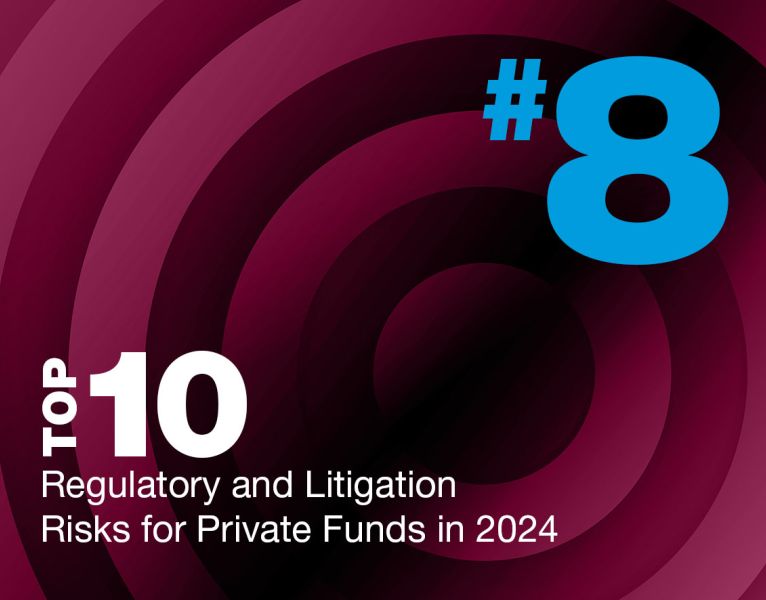Hope for a resurgence during 2024 in Venture Capital fundraising, investment, and returns was strong at the beginning of this year, with optimism fueled by the recovery in 2023 of U.S. stock markets (lead by the performance of large tech companies) and anticipation about how AI might transform industries. Market observers were optimistic then that U.S. venture investment activity would pick up significantly from 2023 levels, which—based on PitchBook data—had reverted to the lower average level of investment seen during the period of 2018-2020 as compared to the robust levels of activity seen in 2021 and the first half of 2022. This hope was centered in large part on expectations about how the Federal Reserve would begin lowering interest rates.
After increasing borrowing costs to their highest level in over two decades in Summer 2023, the Fed held rates steady over the second half of 2023, and then signaled in December 2023 that it intended to make three rate cuts of approximately 0.25% each in 2024. The Fed also indicated its plan for additional cuts in subsequent years, suggesting that the anticipated 2024 reductions would not be temporary. As the year began, the prospect existed of interest rates cumulatively declining by 2% to 2.25% by the end of 2026.
But the macroeconomic landscape has shifted over the first quarter of the year. Consumer spending and job growth have been more robust than forecast and inflation has proven more intractable than expected. Concerns about the war in Ukraine and conflict in the Middle East, together with uncertainty about the 2024 U.S. Presidential election, continue to create market uncertainty. How long interest rates remain high will depend ultimately on when inflation cools. While the Fed indicated at its March rate-setting meeting that it is still looking at three 0.25% rate cuts this year, others are calling that roadmap into question, with Atlanta’s Federal Reserve President Raphael Bostic recently stating publicly that he is expecting only a single rate cut in 2024. And, as of the end of April, markets had priced in only one rate quarter point rate cut for 2024. Whether and when anticipated rate cuts will come to fruition is anybody’s guess.
The optimism at the beginning of the year is tempered now and it appears unlikely that growth will return to the levels we saw in 2021 and early 2022 that preceded the recent rate hikes. At the same time, private funds including venture capital funds face enhanced regulatory requirements and increased SEC oversight. While there are court challenges to the scope of the SEC’s powers and to specific regulatory initiatives (for example, oversight of cryptocurrencies), the venture capital industry will continue to operate in market colored by tremendous uncertainty in 2024.
According to PitchBook data, VC fundraising has declined significantly since 2021 (though fundraising was strong in Q4 2023 and bucked the trend). This likely reflects decisions by investors as to how to deploy capital since the reality is that venture capital fund distributions have been flat and fund returns have declined over the past couple of years as the macroeconomic environment has made both IPO and M&A exits challenging.
Though the timeline may have shifted, when interest rates begin to decline, venture capital funds may again see an increase in investment—as Q4 2023 signalled with rate declines seemed more imminent than now) because investors tend to be more interested in venture capital when U.S. Treasury bills yield less because of low interest rates. Low interest rates could also result in banks being more willing to offer bridge loans to PE funds to finance their acquisitions of venture-backed companies. And the potential return of viable exit options, in contrast to 2023’s near complete standstill of IPOs and general slowdown of M&A activity, could push investors, including public companies, to resume their investment activity. Overall, late 2024 and 2025 could see increased investment activity, and potentially increased interest in higher risk/higher reward investments, than in recent years.
But with increased deal flow, often comes increased litigation. The regulatory and enforcement framework created in 2022 and 2023 could serve as one blueprint. For example, the SEC’s private fund rules from last August could lead to significant regulatory action, especially in a market where funds take on more risks than they were in 2023, when the rules were enacted. Moreover, recent disclosure rules and regulations—such as FinCEN’s reporting system for the 2021 Corporate Transparency Act and FinCEN’s February 2024 proposed regulations that would extend Anti-Money Laundering and Combating the Financing of Terrorism laws to investments advisers, including to Exempt Reporting Advisors such as venture capital managers—may place additional compliance burdens and regulatory scrutiny on venture capital funds, challenges they did not have during the last growth period.
Venture capital funds should also appreciate that they are operating in a more litigious environment than existed even a decade ago. There has been a marked increase in litigation directed at portfolio companies over the past several years in which plaintiffs have attempted to bring claims against perceived deep-pocket venture capital firms themselves invoking theories such as aiding and abetting, conspiracy, or breach of fiduciary duties because a venture capital director appointee sat on a portfolio company’s board.
As macroeconomic conditions improve and market activity picks up, venture capital funds should therefore—as they both deploy capital and participate in exits—be attuned to the realities of today’s more volatile and threatening regulatory and litigation environment and take care to understand the regulatory and legal frameworks that govern each such specific transaction.
Read more of our Top Ten Regulatory and Litigation Risks for Private Funds in 2024.

